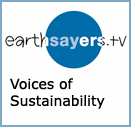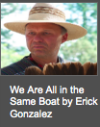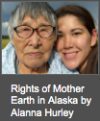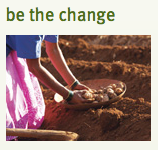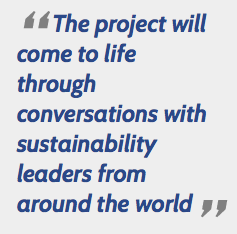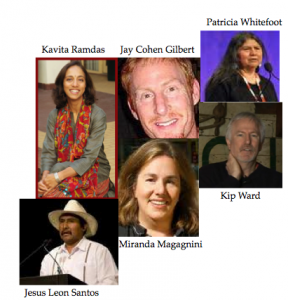Before becoming a sustainability advocate, I spent most of my career working with technology beginning with a Fire and Emergency Information Reporting System project for the City of Toledo (1975) moving in the early 80’s to technology companies. I first used an email system and a PC at Computerland (1983), having moved off mini-computers, and in 1999 began to market high tech products and services developing on the Web seminars (now called webinars), database-driven landing pages, and micro environments.
So the eye-catching graphics with heady statistics by Allison Morris of OnlineClasses.org, which I am sharing with you to encourage them being passed on, reminded me of the progress women have made and of the roads still unpaved for women and girls when it comes to the access I have been taking for granted.
The importance of online access, especially from Ms. Morris’ interest in free e-learning sites, should be addressed in all initiatives, products, and programs that have education of women and girls as their focus especially in developing countries. But is this so?
In a blog supporting the University of Waterloo course MSci 442, The Impact of Information Systems on Organisations and Society (1) Peter Carr addresses information technology in the context of economic development, education and in the article I link to, the digital divide. A practicing online learning professor, Dr. Carr cites more stats and notes, “If we accept that the internet has a significant contribution to make to development then there would be an urgent need to tackle this issue.”
Is there urgency when it comes to educating women and girls? Do we accept the internet as a significant contribution? If not, why not?
Could it be that the big picture of information technology and the issue of the digital divide come into play only when addressing commercial applications and not in terms of educating women and girls? Is it likely that out-dated stereotypes of women, girls, and of the Web itself are the cause and ignorance the driver?
If so, then it’s important to illustrate related facts and spread them far and wide especially among folks like myself who take Internet access for granted and yet understand the importance of educating women and girls to sustainability awareness and adoption.
Source: OnlineClasses.org

For those of my readers who are communicators and have a need for text, Allison provided this text and like the graphics, use freely, but provide attribution to OnlineClasses.org. Thank you.
Across the globe, there are an estimated 2.4 billion Internet users. And in Western society, women actually have a stronger web presence than men, according to the infographic “Women & the Web,” posted by OnlineClasses.org. However, this is not the case everywhere. In areas such as Sub-Saharan Africa, the Middle East & North Africa, and South Asia, women’s access to the Internet is significantly lower than for males. In fact, according to statistics, there are 23% fewer women online than men in developing countries across the world.
Considering the benefits women and their families can obtain through Internet access, this is an important topic of discussion. In a survey of women from developing nations who used the web, 50% reported using it to find and apply for a job, and 30% used it to earn additional income for their families. On average, women reinvested 90% of their income into their family. This figure was only 30-40% for men.
In addition, free e-learning opportunities also contributed to the liberating influence of the Internet. Approximately 8 in 10 women with web access in developing nations reported using the Internet to educate themselves. Sites like Coursera and Udacity are particularly popular.
The economic benefits of increasing women’s access to the internet across the world is undeniable. It’s estimated that $13 to $18 billion would be contributed to the annual GDP in 144 developing nations as women improved their ability to generate income and further their education. So, it’s not surprising that 90% of women surveyed said that Internet access should be a basic human right.
Ruth Ann Barrett, Sustainability Advocate, February 26, 2013, San Francisco, California.
(1) The blog posts are content for the course which considers the impact of IT in a number of areas including the digital divide and education. Peter Carr is a professor in the Department of Managements Sciences . His research has focused on online collaboration in business and on collaboration in online learning. Peter lives in Toronto, Canada.
 The ongoing story of the Coalition for Immokalee Workers is a model of place-based community action (grassroots) working through coalition, collaboration, and agreement rather than separation, disagreement and opposition. It’s about CSR, business human rights, and leadership.
The ongoing story of the Coalition for Immokalee Workers is a model of place-based community action (grassroots) working through coalition, collaboration, and agreement rather than separation, disagreement and opposition. It’s about CSR, business human rights, and leadership. Commissioner of Human Rights, moved beyond “declarations” and used her leadership position and power to bring support to the co-founders Lucas Benitez and Gerardo Reyes-Chavez of the Coalition of Immokalee Workers.
Commissioner of Human Rights, moved beyond “declarations” and used her leadership position and power to bring support to the co-founders Lucas Benitez and Gerardo Reyes-Chavez of the Coalition of Immokalee Workers. Coalition of Immokalee Workers (CIW) and that of the workers, friends, members, and colleagues of the Coalition.
Coalition of Immokalee Workers (CIW) and that of the workers, friends, members, and colleagues of the Coalition. Food campaign organized by the Coalition of Immokalee Workers. CIW farmworker and a co-founder with Lucas of the CIW, Gerardo Reyes-Chavez talks about this social responsibility campaign. So far McDonald’s, Subway, Burger King and Taco Bell have all joined the White House-recognized Social Responsibility Program, agreeing to pay an extra penny per pound of tomatoes to raise wages and only buy from fields where workers’ rights are respected.
Food campaign organized by the Coalition of Immokalee Workers. CIW farmworker and a co-founder with Lucas of the CIW, Gerardo Reyes-Chavez talks about this social responsibility campaign. So far McDonald’s, Subway, Burger King and Taco Bell have all joined the White House-recognized Social Responsibility Program, agreeing to pay an extra penny per pound of tomatoes to raise wages and only buy from fields where workers’ rights are respected.

